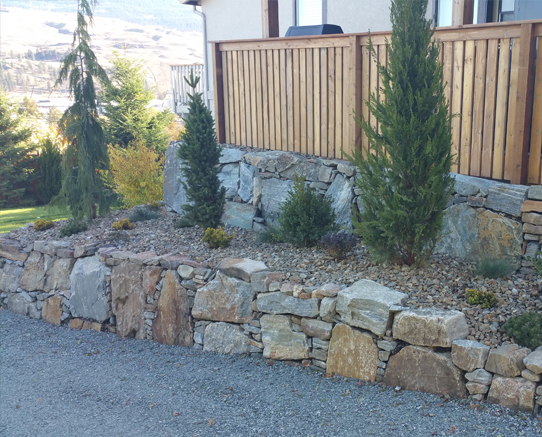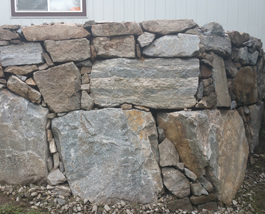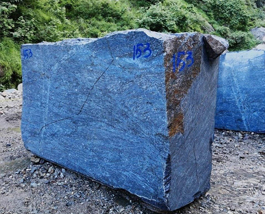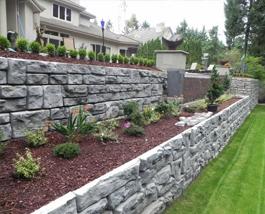Natural Stone Retaining Wall
Natural Stone Retaining Wall
Pros of Natural Stone


Cons of Natural Stone
Types of Stones

Earth Granite
Earth Granite is a very durable and solid stone that is normally made into large, rectangular shapes. It is available in many different colors like white, pink, and gray.

Blue Granite
Blue Granite is another type of granite you can use for a retaining wall. It is mostly quarried in Africa, Norway, Ukraine, and Brazil, making this type of stone very rare and uncommon in North America.

Mountain Ash
This type of landscaping rock is great for drainage and easily cleaned in the fall. It is available in 3 different colors (light blue, charcoal, and mediterranean. These combinations make it perfect for fitting into any type of wall.

Basalt
This type of stone is perfect for landscape jobs that need to stand out. The dark charcoal color makes a great accent color for projects that require some contrast.
Installation
Step 1
The first step will be to excavate a trench where you want to place the retaining wall. Cut into the slope to create a 2 foot wide and 4 inches deep trench.
Step 2
Next you’ll want to level and compact the base of your trench. Make sure you use a level when doing this, and fix any high points that are making the trench uneven. Create a sturdy foundation by repeatedly poundfing the soil tamper against the base, until it will no longer compact.
Step 3
Now fill your trench with 3 inches of gravel to provide a firm base, and to promote drainage. Take your tamper and compact the layer of gravel and make sure it is level.
Step 4
When creating the first course of your wall you’ll want to lay down the largest stone. When laying down the rocks you’ll want to make sure you minimize the gaps in between each rock, and choose rocks of similar thickness, filling the front 1 and a half feet of the trench.
Step 5
Fill the gaps between the big stones with smaller rocks, gravel or soil used from digging the trench. You can use the tamper to compact it into the gaps. Tne add a half layer of soild on top of the first course of stone, and compact the layer.
Step 6
Add additional layers of stone, one at a time. Filling stones together to reduce the gaps between half an inch, and 1 inch wide. Remember to fill the gaps with smaller gravel and soild, and applying a thin layer at the top of each level as per the step above.
Step 7
Lastly, to prevent your wall from failing with excessive rainfall, you’ll want to install a drainage pipe. Install a perforated plastic drainage pipe behind your finished retaining wall. Next cover the pipe with more crushed stone and gravel, while leaving 6 inches between the gravel layer and the top of your wall. To finish, you’ll need to fill the remaining space at the top of your wall with soil.
Get a Free Quote
Contact us to get a free quote on a Kelowna Limestone retaining wall.